Come comment on this article: Elder Scrolls Blades early access preview: it’s pretty good
Elder Scrolls Blades early access preview: it’s pretty good appeared first on http://www.talkandroid.com
Come comment on this article: Elder Scrolls Blades early access preview: it’s pretty good
“Works with AirPower mat”. Apparently not. Looks like Apple doesn’t treat customers with the same “high standard” of care it apparently reserves for its hardware quality. 9 days after launching its $199 wireless charging AirPods headphones touting compatibility with the forthcoming Apple AirPower inductive charger mat, Apple has just scrapped AirPower entirely. It’s an uncharacteristically sloppy move for the “it just works” company. This time it didn’t.
Apple clearly knew AirPower was borked before launching the new AirPods wireless charging case on March 20th. Failing to be transparent about that is an abuse of customer trust. That’s especially damaging for a company constantly asking us to pre-order new products and that’s known for planned obsolescence. It should really find some way to make it up to people, especially given it has $245 billion in cash on hand.
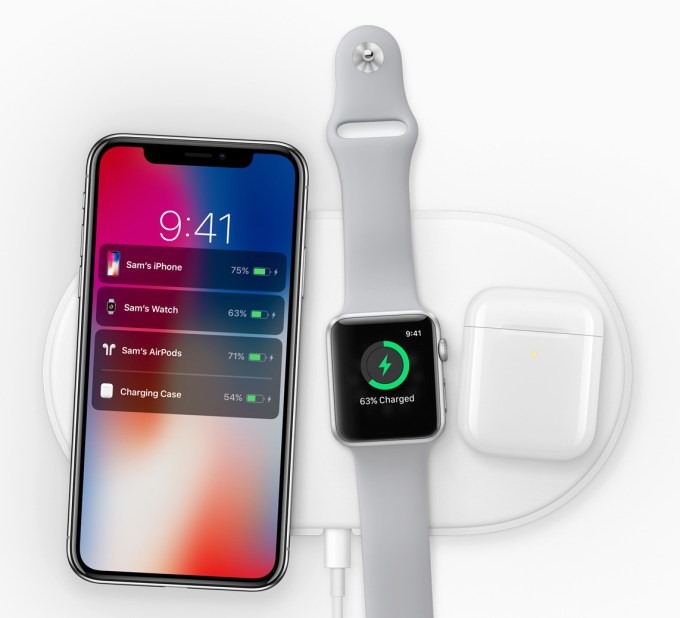
TechCrunch broke the news of AirPower’s demise. “After much effort, we’ve concluded AirPower will not achieve our high standards and we have cancelled the project. We apologize to those customers who were looking forward to this launch. We continue to believe that the future is wireless and are committed to push the wireless experience forward,” said Dan Riccio, Apple’s senior vice president of Hardware Engineering in an emailed statement today.
That comes as a pretty sour surprise for people who bought the $199 wireless charging AirPods that mention AirPower compatability or the $79 standalone charging case with a full-on diagram of how to use AirPower drawn on the box.
Apple first announced the AirPower mat in 2017 saying it would arrive the next year along with a wireless charging case for AirPods. But when the new AirPods launched March 20th with no mention of AirPower in the press release, suspicions mounted. Now we know Apple was concerned about devices overheating, so it decided not to ship what could become the next Galaxy Note 7 fire hazard.
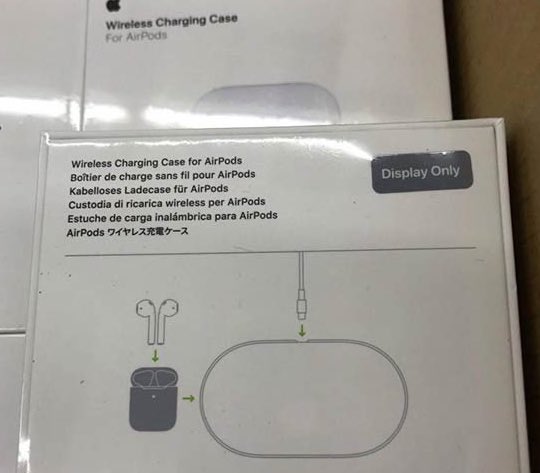
The new AirPods with wireless charging case even had a diagram of AirPower on the box. Image via Ryan Jones
There are plenty of other charging mats that work with AirPods, and maybe Apple will release a future iPhone or MacBook that can wireleslly pass power to the pods. But anyone hoping to avoid janky third-party brands and keep it in the Apple family is out of luck for now.
Luckily, some who bought the new AirPods with wireless charging case are still eligible for a refund. But if you got yours personalized with an engraving (I had my phone number laser-etched on since I constantly lose them), there are no refunds allowed. And then there are all the people who bought Apple Watches, or iPhone 8 or later models who were anxiously awaiting AirPower. We’ve asked Apple if it will grant any return exceptions.
Combined with the disastrously fragile keyboards on new MacBooks and Apple’s recent vaporware services event where it announced Apple Card, TV+, and Arcade despite them being months from launch, the world’s cash-richest company looks like a mess. Apple risks looking us unreliable as Android if it can’t get its act together.
Come comment on this article: [TA Deals] Save on the Complete Python Data Science bundle (96% off)
Come comment on this article: Android TV keeps growing, even without any mainstream boxes you can buy
Come comment on this article: NVIDIA is probably working on a new Shield TV
Come comment on this article: Twitter makes its dark mode even darker
The Mars 2020 mission is on track for launch next year, and nesting inside the high-tech new rover heading that direction is a high-tech helicopter designed to fly in the planet’s nearly non-existent atmosphere. The actual aircraft that will fly on the Martian surface just took its first flight and its engineers are over the moon.
“The next time we fly, we fly on Mars,” said MiMi Aung, who manages the project at JPL, in a news release. An engineering model that was very close to final has over an hour of time in the air, but these two brief test flights were the first and last time the tiny craft will take flight until it does so on the distant planet (not counting its “flight” during launch).
“Watching our helicopter go through its paces in the chamber, I couldn’t help but think about the historic vehicles that have been in there in the past,” she continued. “The chamber hosted missions from the Ranger Moon probes to the Voyagers to Cassini, and every Mars rover ever flown. To see our helicopter in there reminded me we are on our way to making a little chunk of space history as well.”
A helicopter flying on Mars is much like a helicopter flying on Earth, except of course for the slight differences that the other planet has a third less gravity and 99 percent less air. It’s more like flying at 100,000 feet, Aung suggested.
The test rig they set up not only produces a near-vacuum, replacing the air with a thin, Mars-esque CO2 mix, but a “gravity offload” system simulates lower gravity by giving the helicopter a slight lift via a cable.
It flew at a whopping two inches of altitude for a total of a minute in two tests, which was enough to show the team that the craft (with all its 1,500 parts and four pounds) was ready to package up and send to the Red Planet.
“It was a heck of a first flight,” said tester Teddy Tzanetos. “The gravity offload system performed perfectly, just like our helicopter. We only required a 2-inch hover to obtain all the data sets needed to confirm that our Mars helicopter flies autonomously as designed in a thin Mars-like atmosphere; there was no need to go higher.”
A few months after the Mars 2020 rover has landed, the helicopter will detach and do a few test flights of up to 90 seconds. Those will be the first heavier-than-air flights on another planet — powered flight, in other words, rather than, say, a balloon filled with gaseous hydrogen.
The craft will operate mostly autonomously, since the half-hour round trip for commands would be far too long for an Earth-based pilot to operate it. It has its own solar cells and batteries, plus little landing feet, and will attempt flights of increasing distance from the rover over a 30-day period. It should go about three meters in the air and may eventually get hundreds of meters away from its partner.
Mars 2020 is estimated to be ready to launch next summer, arriving at its destination early in 2021. Of course, in the meantime, we’ve still got Curiosity and Insight up there, so if you want the latest from Mars, you’ve got plenty of options to choose from.
Instant print cameras have been popular for a long, long time, but they’re seeing a renaissance now — led by Fujifilm, whose Instax mini-films and cameras lead the pack. But Canon wants in, and has debuted a pair of new cameras to challenge Fuji’s dominance — but their reliance on digital printing may hold them back.
The cameras have confusing, nonsensical names in both the U.S. and Europe: Here, they’re the IVY CLIQ and CLIQ+, while across the pond it’s the Zoemini C and S. Really now, Canon! But the devices themselves are extremely simple, especially if you ignore the cheaper one, which you absolutely should do.
The compact CLIQ+ has a whole 8 megapixels on its tiny sensor, but that’s more than enough to send to the 2×3″ Zink printer built into the camera. The printer can store up to ten sheets of paper at once, and spits them out in seconds if you’re in a hurry, or whenever you feel like it if you want to tweak them, add borders, crop or do duplicates, and so on. That’s all done in a companion app.
 And herein lies the problem: Zink prints just aren’t that good. They cost less than half of what Instax Mini do per shot (think a quarter or so if you buy a lot) — but the difference in quality is visible. They’ve gotten better since the early days when they were truly bad, but the resolution and color reproduction just isn’t up to instant film standards. Instax may not be perfect, but a good shot will get very nice color and very natural-looking (if not tack-sharp) details.
And herein lies the problem: Zink prints just aren’t that good. They cost less than half of what Instax Mini do per shot (think a quarter or so if you buy a lot) — but the difference in quality is visible. They’ve gotten better since the early days when they were truly bad, but the resolution and color reproduction just isn’t up to instant film standards. Instax may not be perfect, but a good shot will get very nice color and very natural-looking (if not tack-sharp) details.
The trend towards instant printing is also at least partly a trend towards the purely mechanical and analog. People tired of taking a dozen shots on their phone and then never looking at them again are excited by the idea that you can leave your phone in your bag and get a fun photographic keepsake, no apps or wireless connections necessary.
A digital camera with a digital printer that connects wirelessly to an app on your smartphone may not be capable of capitalizing on this trend. But then again, they could be a great cheap option for the younger digital-native set and kids who don’t care about image quality, have no affinity for analog tech, and just want to print stickers for their friends or add memes to their shots.
The $160 CLIQ+, or Zoemini S, has a ring flash as well as the higher megapixel count of the two (8 vs 5), and the lower-end $100 model doesn’t support the app, either. Given the limitations of the sensor and printer, you’re going to want as much flash as you can get. That’s too bad, because the cheap one comes in a dandy yellow color that is by far the most appealing to me.
The cameras should be available in a month or two at your local retailer or online shop.
Come comment on this article: Sony is trying to avoid turning into the next HTC
Come comment on this article: Google I/O event hints at dark mode and new navigation features in Android Q
Come comment on this article: [TA Deals] Save 97% on the Windows Server Admin and CompTIA certification bundle
Come comment on this article: Samsung previews Galaxy A70; its latest uninspired mid-ranger
Come comment on this article: Huawei P30 and P30 Pro Specifications – What’s the difference?
What lies beneath the murky depths? SolarCity co-founder Peter Rive wants to help you and the scientific community find out. He’s just led a $7 million Series A for SoFar Ocean Technologies, a new startup formed from a merger he orchestrated between underwater drone maker OpenROV and sea sensor developer Spoondrift. Together, they’re teaming up their 1080p Trident drone and solar-powered Spotter sensor to let you collect data above and below the surface. They can help you shoot awesome video footage, track waves and weather, spot fishing and diving spots, inspect boats or infrastructure for damage, monitor acquaculture sites, or catch smugglers.
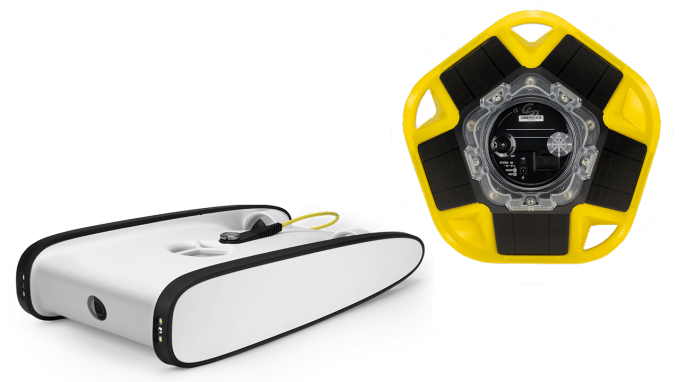
SoFar’s Trident drone (left) and Spotter sensor (right)
“Aerial drones give us a different perspective of something we know pretty well. Ocean drones give us a view at something we don’t really know at all” former Spoondrift and now SoFar CEO Tim Janssen tells me. “The Trident drone was created for field usage by scientists and is now usable by anyone. This is pushing the barrier towards the unknown.”
But while Rive has a soft-spot for the ecological potential of DIY ocean exploration, the sea is crowded with competing drones. There are more expensive professional research-focused devices like the Saildrone, DeepTrekker, and SeaOtter-2 as well as plenty of consumer-level devices like the $800 Robosea Biki, $1000 Fathom ONE, and $5000 iBubble. The $1700 SoFar Trident, which requires a cord to a surface buoy to power its 3 hours of dive time and 2 meters per second speed, sits in the middle of the pack, but SoFar co-founder David Lang things Trident can win with simplicity, robustness, and durability. The question is whether SoFar can become the DJI of the water, leading the space, or if it will become just another commoditized hardware maker drowning in knock-offs.

From left: Peter Rive (Chairman of Sofar), David Lang (Co-founder of OpenRov), and Tim Janssen (Co-founder & CEO of Sofar)
Spoondrift had launched in 2016 and raised $350,000 to build affordable ocean sensors that can produce climate tracking data. “These buoys (Spotters) are surprisingly easy to deploy, very light and easy to handle, and can be lowered in the water by hand using a line. As a result, you can deploy them in almost any kind of conditions” says Dr. Aitana Forcén-Vázquez of MetOcean Solutions.
OpenROV (it stands for Remotely Operated Vehicle) started seven years ago and had raised $1.3 million in funding from True Ventures and National Geographic, which was also one of its biggest Trident buyers. “Everyone who has a boat should have an underwater drone for hull inspection. Any dock should have its own weather station with wind and weather sensors” SoFar’s new chairman Rive declares.

Spotter could unlock data about the ocean at scale
SoFar will need scale to accomplish Rive’s mission to get enough sensors in the sea to give us more data on the progress of climate change and other ecological issues. “We know very little about our oceans since we have so little data because putting systems in the ocean is extremely expensive. It can cost millions for sensors and for boats” he tells me. We gave everyone GPS sensors and cameras and got better maps. The ability to put low-cost sensors on citizens’ rooftops unlocked tons of weather forecasting data. That’s more feasible with Spotter, which costs $4900 compared to $100,000 for some sea sensors.
SoFar hardware owners do not have to share data back to the startup, but Rive say many customers are eager to. They’ve requested better data portability so they can share with fellow researchers. The startup believes it can find ways to monetize that data in the future, which is partly what attracted the funding from Rive plus fellow investors True Ventures and David Sacks’ Craft Ventures. The funding will build up that data business and also help SoFar develop safeguards to make sure its Trident drones don’t go where they shouldn’t. That obviously important given London’s airport shutdown due to a trespassing drone.

Spotter can relay weather conditions and other climate data to your phone
“The ultimate mission of the company is to connect humanity to the ocean as we’re mostly conservationists at heart” Rive concludes. “As more commercialization and business opportunities arise, we’ll have to have conversations about whether those are directly benefiting the ocean. It will be important to have our moral compass facing in the right direction to protect the earth.”
Developments in the self-driving car world can sometimes be a bit dry: a million miles without an accident, a 10 percent increase in pedestrian detection range, and so on. But this research has both an interesting idea behind it and a surprisingly hands-on method of testing: pitting the vehicle against a real racing driver on a course.
To set expectations here, this isn’t some stunt, it’s actually warranted given the nature of the research, and it’s not like they were trading positions, jockeying for entry lines, and generally rubbing bumpers. They went separately, and the researcher, whom I contacted, politely declined to provide the actual lap times. This is science, people. Please!
The question which Nathan Spielberg and his colleagues at Stanford were interested in answering has to do with an autonomous vehicle operating under extreme conditions. The simple fact is that a huge proportion of the miles driven by these systems are at normal speeds, in good conditions. And most obstacle encounters are similarly ordinary.
If the worst should happen and a car needs to exceed these ordinary bounds of handling — specifically friction limits — can it be trusted to do so? And how would you build an AI agent that can do so?
The researchers’ paper, published today in the journal Science Robotics, begins with the assumption that a physics-based model just isn’t adequate for the job. These are computer models that simulate the car’s motion in terms of weight, speed, road surface, and other conditions. But they are necessarily simplified and their assumptions are of the type to produce increasingly inaccurate results as values exceed ordinary limits.
Imagine if such a simulator simplified each wheel to a point or line when during a slide it is highly important which side of the tire is experiencing the most friction. Such detailed simulations are beyond the ability of current hardware to do quickly or accurately enough. But the results of such simulations can be summarized into an input and output, and that data can be fed into a neural network — one that turns out to be remarkably good at taking turns.
The simulation provides the basics of how a car of this make and weight should move when it is going at speed X and needs to turn at angle Y — obviously it’s more complicated than that, but you get the idea. It’s fairly basic. The model then consults its training, but is also informed by the real-world results, which may perhaps differ from theory.
So the car goes into a turn knowing that, theoretically, it should have to move the wheel this much to the left, then this much more at this point, and so on. But the sensors in the car report that despite this, the car is drifting a bit off the intended line — and this input is taken into account, causing the agent to turn the wheel a bit more, or less, or whatever the case may be.
And where does the racing driver come into it, you ask? Well, the researchers needed to compare the car’s performance with a human driver who knows from experience how to control a car at its friction limits, and that’s pretty much the definition of a racer. If your tires aren’t hot, you’re probably going too slow.
The team had the racer (a “champion amateur race car driver,” as they put it) drive around the Thunderhill Raceway Park in California, then sent Shelley — their modified, self-driving 2009 Audi TTS — around as well, ten times each. And it wasn’t a relaxing Sunday ramble. As the paper reads:
Both the automated vehicle and human participant attempted to complete the course in the minimum amount of time. This consisted of driving at accelerations nearing 0.95g while tracking a minimum time racing trajectory at the the physical limits of tire adhesion. At this combined level of longitudinal and lateral acceleration, the vehicle was able to approach speeds of 95 miles per hour (mph) on portions of the track.
Even under these extreme driving conditions, the controller was able to consistently track the racing line with the mean path tracking error below 40 cm everywhere on the track.
In other words, while pulling a G and hitting 95, the self-driving Audi was never more than a foot and a half off its ideal racing line. The human driver had much wider variation, but this is by no means considered an error — they were changing the line for their own reasons.
“We focused on a segment of the track with a variety of turns that provided the comparison we needed and allowed us to gather more data sets,” wrote Spielberg in an email to TechCrunch. “We have done full lap comparisons and the same trends hold. Shelley has an advantage of consistency while the human drivers have the advantage of changing their line as the car changes, something we are currently implementing.”
 Shelley showed far lower variation in its times than the racer, but the racer also posted considerably lower times on several laps. The averages for the segments evaluated were about comparable, with a slight edge going to the human.
Shelley showed far lower variation in its times than the racer, but the racer also posted considerably lower times on several laps. The averages for the segments evaluated were about comparable, with a slight edge going to the human.
This is pretty impressive considering the simplicity of the self-driving model. It had very little real-world knowledge going into its systems, mostly the results of a simulation giving it an approximate idea of how it ought to be handling moment by moment. And its feedback was very limited — it didn’t have access to all the advanced telemetry that self-driving systems often use to flesh out the scene.
The conclusion is that this type of approach, with a relatively simple model controlling the car beyond ordinary handling conditions, is promising. It would need to be tweaked for each surface and setup — obviously a rear-wheel-drive car on a dirt road would be different than front-wheel on tarmac. How best to create and test such models is a matter for future investigation, though the team seemed confident it was a mere engineering challenge.
The experiment was undertaken in order to pursue the still-distant goal of self-driving cars being superior to humans on all driving tasks. The results from these early tests are promising, but there’s still a long way to go before an AV can take on a pro head-to-head. But I look forward to the occasion.
Come comment on this article: Samsung will drop all of the buttons on the Galaxy Note 10
Come comment on this article: [TA Deals] Improve your WiFi connection with a discount on NetSpot Home (72% off)
FarmWise wants robots to do the dirty part of farming: weeding. With that thought, the San Francisco-based startup enlisted the help of Michigan-based manufacturing and automotive company Roush to build prototypes of the self-driving robots. An early prototype is pictured above.
Financial details of the collaboration were not released.
The idea is these autonomous weeders will replace herbicides and save the grower on labor. By using high-precision weeding, the robotic farm hands can increase the yield of the crops by working day and night to remove unwanted plants and weeds. After all, herbicides are in part because weeding is a terrible job.
With Roush, FarmWise will build a dozen prototypes win 2019 with the intention of scaling to additional units in 2020. But why Michigan?
“Michigan is well-known throughout the world for its manufacturing and automotive industries, the advanced technology expertise and state-of-the-art manufacturing practices,” Thomas Palomares, FarmWise co-founder and CTO said. “These are many of the key ingredients we need to manufacture and test our machines. We were connected to Roush through support from PlanetM, and as a technology startup, joining forces with a large and well-respected legacy automaker is critical to support the scale of our manufacturing plan.”
Roush has a long history in Michigan as a leading manufacturing of high performance auto parts. More recently, the company has expanded its focus to using its manufacturing expertise elsewhere including robotics and alternative fuel system design.
“This collaboration showcases the opportunities that result from connecting startups like FarmWise with Michigan-based companies like Roush that bring their manufacturing know-how to making these concepts a reality,” said Trevor Pawl, group vice president of PlanetM, Pure Michigan Business Connect and International Trade at the Michigan Economic Development Corporation. “We are excited to see this collaboration come to fruition. It is a great example of how Michigan can bring together emerging companies globally seeking prototype and production support with our qualified manufacturing base in the state.”
FarmWise was founded in 2016 and has raised $5.7 million through a seed-stage investment including an investment from Playground Global. TechCrunch first saw FarmWise during Alchemist Accelerator’s batch 15 demo day.
Come comment on this article: Silk Galaxy S10 Wallet Slayer case review: nix your wallet, pick up some features
Come comment on this article: Huawei’s P30 Pro is announced with a set of excellent cameras and a tiny notch
Almost exactly 10 years ago, I was at GDC participating in a demo of a service I didn’t think could exist: OnLive. The company had promised high-definition, low-latency streaming of games at a time when real broadband was uncommon, mobile gaming was still defined by Bejeweled (though Angry Birds was about to change that), and Netflix was still mainly in the DVD-shipping business.
Although the demo went well, the failure of OnLive and its immediate successors to gain any kind of traction or launch beyond a few select markets indicated that while it may be in the future of gaming, streaming wasn’t in its present.
Well, now it’s the future. Bandwidth is plentiful, speeds are rising, games are shifting from things you buy to services you subscribe to, and millions prefer to pay a flat fee per month rather than worry about buying individual movies, shows, tracks, or even cheeses.
Consequently, as of this week — specifically as of Google’s announcement of Stadia on Tuesday — we see practically every major tech and gaming company attempting to do the same thing. Like the beginning of a chess game, the board is set or nearly so, and each company brings a different set of competencies and potential moves to the approaching fight. Each faces different challenges as well, though they share a few as a set.
Google and Amazon bring cloud-native infrastructure and familiarity online, but is that enough to compete with the gaming know-how of Microsoft, with its own cloud clout, or Sony, which made strategic streaming acquisitions and has a service up and running already? What of the third parties like Nvidia and Valve, publishers and storefronts that may leverage consumer trust and existing games libraries to jump start a rival? It’s a wide-open field, all right.
Before we examine them, however, it is perhaps worthwhile to entertain a brief introduction to the gaming space as it stands today and the trends that have brought it to this point.
Huawei held a press conference today in Paris. And the company just unveiled its brand new flagship phone — the P30 and the P30 Pro. In many ways, this year’s update is a continuation of the P20 series — but everything has been upgraded. I played with both devices for a bit of time yesterday, here’s my experience.
While Huawei’s sub-brand Honor has switched to a hole-punch design, Huawei is keeping the good old notch for its flagship device. But this year’s notch is a lot smaller. The company has switched from an iPhone X-like notch to a tiny little teardrop notch.
The P20 and P20 Pro were the last flagship phones to feature a fingerprint sensor below the display, on the front of the device. With the P30 series, Huawei is removing that odd-looking bezel and integrating the fingerprint sensor in the display.
The company could have used that opportunity to make the phones smaller. But Huawei opted for taller displays instead. The P20 and P20 Pro had 5.8-inch and 6.1-inch displays with a 18.7:9 aspect ratio. The P30 and P30 Pro have gigantic 6.1-inch and 6.47-inch displays with a 19.5:9 aspect ratio.
The P30 Pro is still narrower than the iPhone XR, but it won’t be for everyone. It definitely feels too big in my hand for instance.
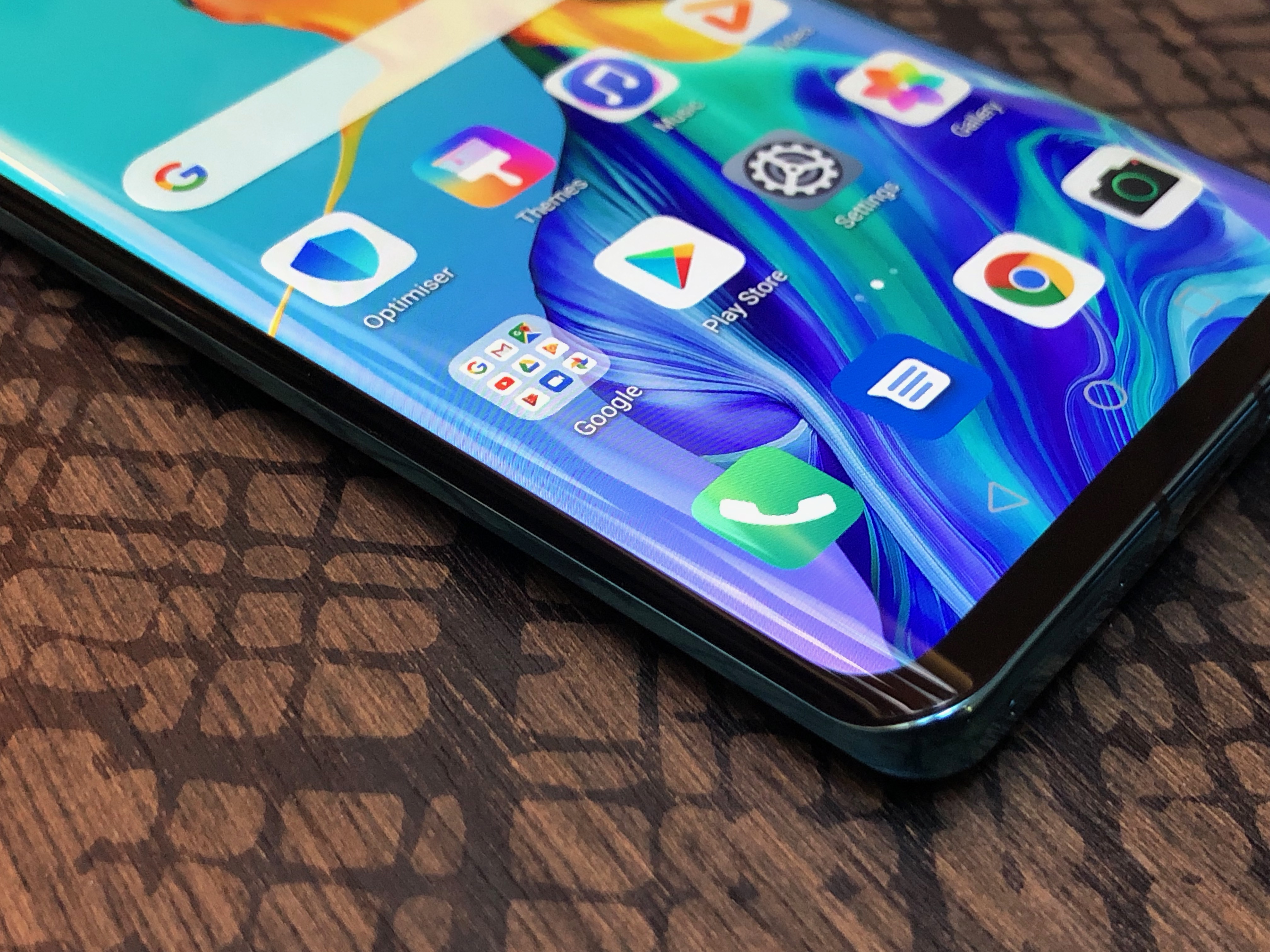
The industrial design of the P30 series is in line with the P20 series. The phones feature a glass on the back with colorful gradients. The frame is made of aluminum. Overall, the devices feel slimmer on the edges thanks to curved back and front glasses. The company has flattened the top and bottom edges of the devices as well. Everything feels solid in your hand.
The P30 and P30 Pro are now closer when it comes to features. They both have an OLED display with a 2340*1080 resolution for instance. You no longer have to choose between an LCD and an OLED display.

The two biggest differences you can spot is that the P30 Pro has a Samsung-style display, slightly curved on the sides — the P30 displays is completely flat. Huawei is also bringing back the headphone jack, but only for the P30. It doesn’t really make sense to segment the lineup this way, but maybe Huawei considers you have enough money to buy wireless earbuds if you’re in the market for a P30 Pro.
Both devices come in five colors — Breathing Crystal, Amber Sunrise, Perl White, Black and Aurora. Amber Sunrise is a red to orange gradient color, Breathing Crystal is a white-to-purple gradient, Perl White is a white-to-slightly pink gradient, Aurora is a blue-to-turquoise gradient.
You’ll be able to buy the P30 for €799 ($900) with 128GB of storage and the P30 Pro for €999 ($1,130) for 128GB of storage — there are more expensive options for the P30 Pro with more storage. The phones will be available in Europe and Asia today, and probably won’t be released in the U.S.
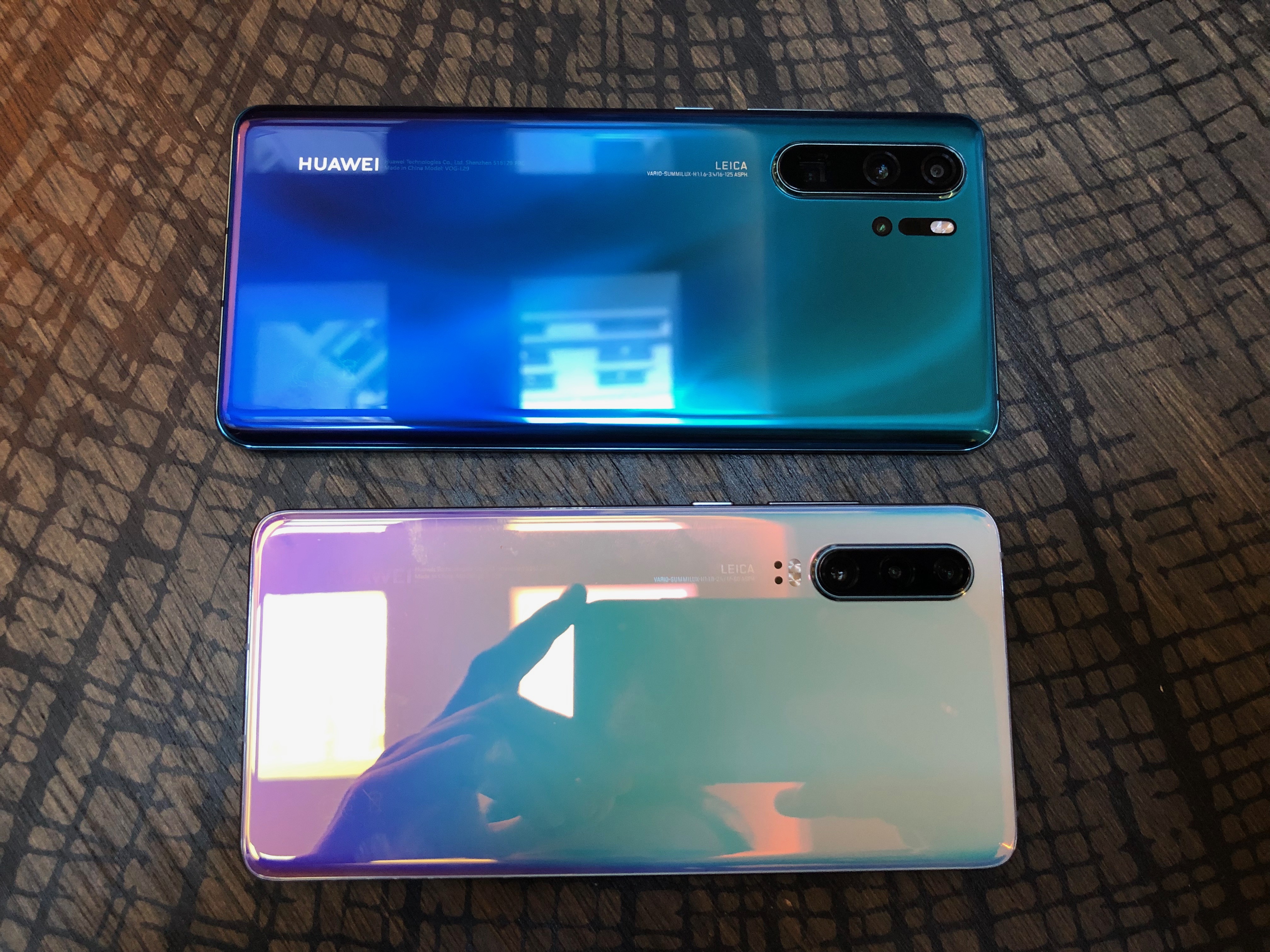
When it comes to cameras, Huawei has always been one of the leading smartphone manufacturers on this front. There are only four brands that ship cameras that perform so well — Apple, Samsung, Google and Huawei.
It’s going to be hard to comment on the quality of the photos after so little hands-on time, but the P30 Pro now features not one, not two, not three but f-o-u-r sensors on the back of the device.

Thanks to the new time-of-flight sensor, Huawei promises better bokeh effects with a new depth map. The company also combines the main camera sensor with the telephoto sensor to let you capture photos with a 10x zoom with a hybrid digital-optical zoom.
The telephoto lens uses a periscope design. It means that the sensor features a glass to beam the light at a right angle. Huawei uses that method to avoid making the phone too thick.
On the P30, the cameras are more or less the same, but a bit worse:
More than hardware specifications, Huawei says that software has been greatly improved to enhance the quality of your photos. In particular, night mode should be much better thanks to optical and software-enabled stabilization. HDR shots and portrait photos should look better too.
On the front of the device, the selfie camera sensor has been upgraded from 24 MP to 32 MP. And you can capture HDR and low light photos from the front camera as well.
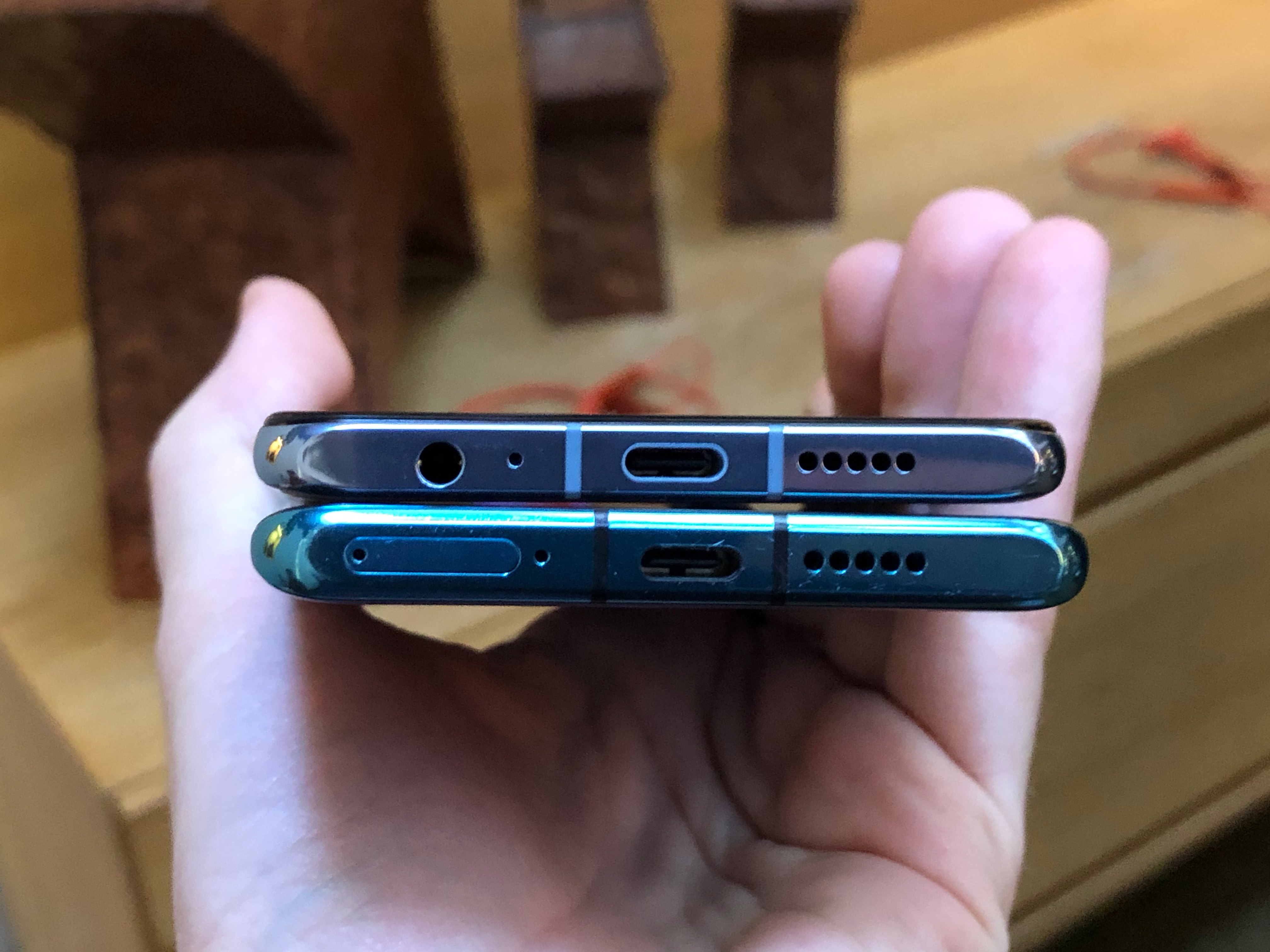
Huawei has upgraded its homemade system-on-a-chip with the Kirin 980 that you can find in the Mate 20 and Mate 20 Pro. It runs Android Pie 9.1 with Huawei’s EMUI custom Android user interface.
In addition to 40W USB-C charging, Huawei is integrating wireless charging for the first time in the P series (up to 15W). The P30 Pro has a 4,200 mAh battery. You can also charge other devices with reverse wireless charging, just like on the Samsung Galaxy S10.
The P30 Pro is IP68 water and dust resistant while the P30 is IP53 resistant.
You won’t find a speaker grill at the top of the P30 Pro because the company has removed the speaker. Instead, Huawei is vibrating the screen in order to turn the screen into a tiny speaker for your calls.
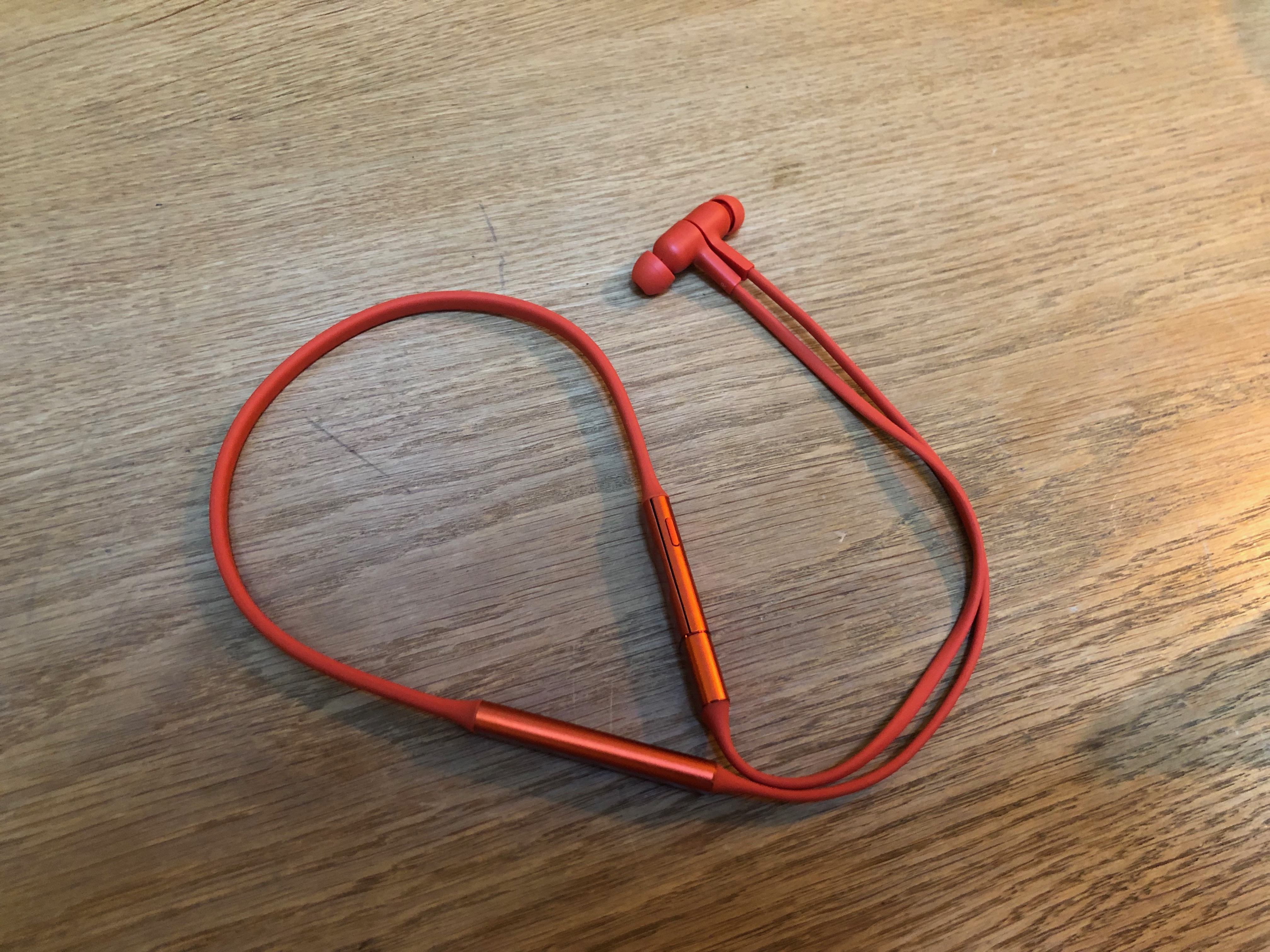
Huawei is also launching new in-ear earbuds today. The FreeLace looks more or less like the BeatsX with a cord behind your neck. You can disconnect the cord and plug your wireless earphones directly into your smartphone to pair them – no Bluetooth pairing required.
That hidden USB-C port is also how you’re going to charge the earbuds. For 5 minutes of charge time, you get 4 hours worth of playback. They’ll be available in four colors — Graphite Black, Amber Sunrise, Emerald Green and Moonlight Silver.
The earbuds are magnetic so you can wrap them around your neck. When you disconnect them, it automatically answers your calls, play your music. When you connect them again, it hangs up or pause your music. The FreeLace earbuds will be a separate accessory for €99.
Come comment on this article: [TA Deals] Save 98% on the complete Microsoft and Oracle SQL certification bundle
Huawei is launching connected glasses in partnership with Gentle Monster, a Korean sunglasses and optical glasses brand. There won’t be a single model, but a collection of glasses with integrated electronics.
Huawei is positioning the glasses as a sort of earbuds replacement, a device that lets you talk on the phone without putting anything in your ears. There’s no button on the device, but you can tap the temple of the glasses to answer a call for instance.
The antenna, charging module, dual microphone, chipset, speaker and battery are all integrated in the eyeglass temple. There are two microphones with beam-forming technology to understand what you’re saying even if the device is sitting on your nose.
There are stereo speakers positioned right above your ears. The company wants you to hear sound without disturbing your neighbors. Interestingly, there’s also no camera on the device. Huawei wants to avoid any privacy debate by skipping the camera altogether.

The glasses come in a leather case with USB-C port at the bottom. It features wireless charging as well. Huawei teased the glasses at the P30 press conference in Paris, but the glasses won’t be available before July 2019.
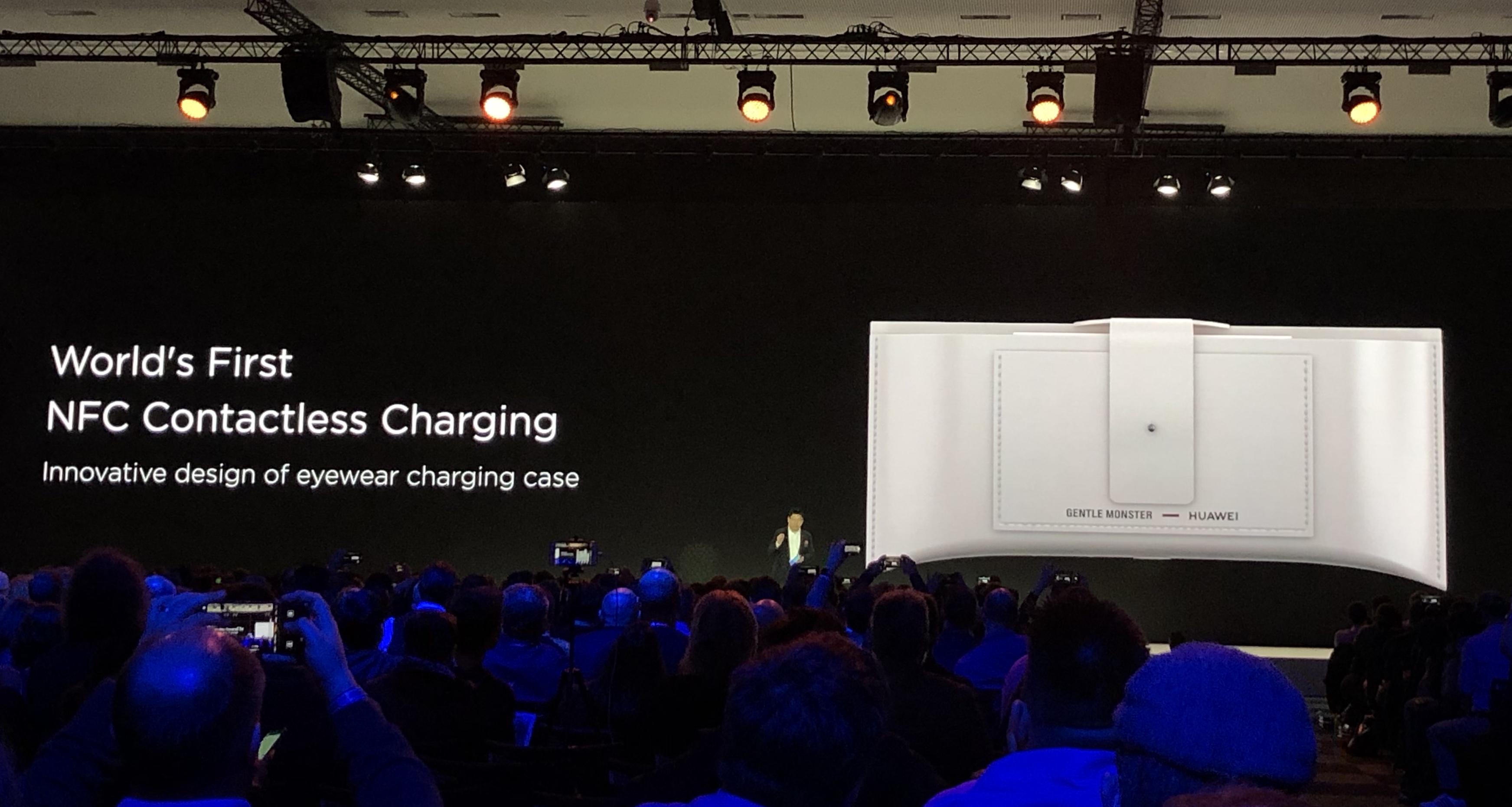
Come comment on this article: Nokia X71/8.1 Plus announcement on April 2nd
Come comment on this article: Xiaomi’s new 100W charging technology is the speed you need
While creating self-driving car systems, it’s natural that different companies might independently arrive at similar methods or results — but the similarities in a recent “first of its kind” Nvidia proposal to work done by Mobileye two years ago were just too much for the latter company’s CEO to take politely.
Amnon Shashua, in a blog post on parent company Intel’s news feed cheekily titled “Innovation Requires Originality, openly mocks Nvidia’s “Safety Force Field,” pointing out innumerable similarities to Mobileye’s “Responsibility Sensitive Safety” paper from 2017.
He writes:
It is clear Nvidia’s leaders have continued their pattern of imitation as their so-called “first-of-its-kind” safety concept is a close replica of the RSS model we published nearly two years ago. In our opinion, SFF is simply an inferior version of RSS dressed in green and black. To the extent there is any innovation there, it appears to be primarily of the linguistic variety.
Now, it’s worth considering the idea that the approach both seem to take is, like many in the automotive and autonomous fields and others, simply inevitable. Car makers don’t go around accusing each other of using the similar setup of four wheels and two pedals. It’s partly for this reason, and partly because the safety model works better the more cars follow it, that when Mobileye published its RSS paper, it did so publicly and invited the industry to collaborate.
Many did, and as Shashua points out, including Nvidia, at least for a short time in 2018, after which Nvidia pulled out of collaboration talks. To do so and then, a year afterwards, propose a system that is, if not identical, then at least remarkably similar, and without crediting or mentioning Mobileye is suspicious to say the least.
The (highly simplified) foundation of both is calculating a set of standard actions corresponding to laws and human behavior that plan safe maneuvers based on the car’s own physical parameters and those of nearby objects and actors. But the similarities extend beyond these basics, Shashua writes (emphasis his):
RSS defines a safe longitudinal and a safe lateral distance around the vehicle. When those safe distances are compromised, we say that the vehicle is in a Dangerous Situation and must perform a Proper Response. The specific moment when the vehicle must perform the Proper Response is called the Danger Threshold.
SFF defines identical concepts with slightly modified terminology. Safe longitudinal distance is instead called “the SFF in One Dimension;” safe lateral distance is described as “the SFF in Higher Dimensions.” Instead of Proper Response, SFF uses “Safety Procedure.” Instead of Dangerous Situation, SFF replaces it with “Unsafe Situation.” And, just to be complete, SFF also recognizes the existence of a Danger Threshold, instead calling it a “Critical Moment.”
This is followed by numerous other close parallels, and just when you think it’s done, he includes a whole separate document (PDF) showing dozens of other cases where Nvidia seems (it’s hard to tell in some cases if you’re not closely familiar with the subject matter) to have followed Mobileye and RSS’s example over and over again.
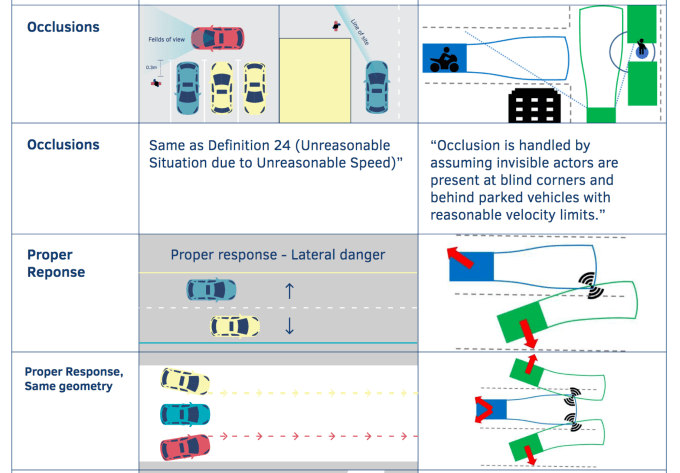 Theoretical work like this isn’t really patentable, and patenting wouldn’t be wise anyway, since widespread adoption of the basic ideas is the most desirable outcome (as both papers emphasize). But it’s common for one R&D group to push in one direction and have others refine or create counter-approaches.
Theoretical work like this isn’t really patentable, and patenting wouldn’t be wise anyway, since widespread adoption of the basic ideas is the most desirable outcome (as both papers emphasize). But it’s common for one R&D group to push in one direction and have others refine or create counter-approaches.
You see it in computer vision, where for example Google boffins may publish their early and interesting work, which is picked up by FAIR or Uber and improved or added to in another paper 8 months later. So it really would have been fine for Nvidia to publicly say “Mobileye proposed some stuff, that’s great but here’s our superior approach.”
Instead there is no mention of RSS at all, which is strange considering their similarity, and the only citation in the SFF whitepaper is “The Safety Force Field, Nvidia, 2017,” in which, we are informed on the very first line, “the precise math is detailed.”
 Just one problem: This paper doesn’t seem to exist anywhere. It certainly was never published publicly in any journal or blog post by the company. It has no DOI number and doesn’t show up in any searches or article archives. This appears to be the first time anyone has ever cited it.
Just one problem: This paper doesn’t seem to exist anywhere. It certainly was never published publicly in any journal or blog post by the company. It has no DOI number and doesn’t show up in any searches or article archives. This appears to be the first time anyone has ever cited it.
It’s not required for rival companies to be civil with each other all the time, but in the research world this will almost certainly be considered poor form by Nvidia, and that can have knock-on effects when it comes to recruiting and overall credibility.
I’ve contacted Nvidia for comment (and to ask for a copy of this mysterious paper). I’ll update this post if I hear back.
Come comment on this article: [TA Deals] Master data analysis with this discounted Microsoft bundle (98% off)
Come comment on this article: Samsung updates the re-released Galaxy Note 7 to Android Pie
Today, Apple announced… a credit card. The Apple Card is designed for the iPhone and will work with the Wallet app. You sign up from your iPhone and you can use it with Apple Pay in just a few minutes.
Before introducing the card, Apple CEO Tim Cook shared a few numbers about Apple Pay. This year, Apple Pay will reach 10 billion transactions this year. By the end of this year, Apple Pay will be available in more than 40 countries.
Retail acceptance of Apple Pay is always growing. In the U.S., 70 percent of businesses accept Apple Pay. But it’s higher in some countries — Australia is at 99 percent acceptance for instance.
But let’s talk about the Apple Card. After signing up, you control the Apple Card from the Wallet app. When you tap on the card, you can see your last transactions, how much you owe, how much money you spent on each category.
You can tap on a transaction and see the location in a tiny Apple Maps view. Every time you make an Apple Pay transaction, you get 2 percent in cash back. You don’t have to wait until the end of the month as your cash is credited every day. For Apple purchases, you get 3 percent back.
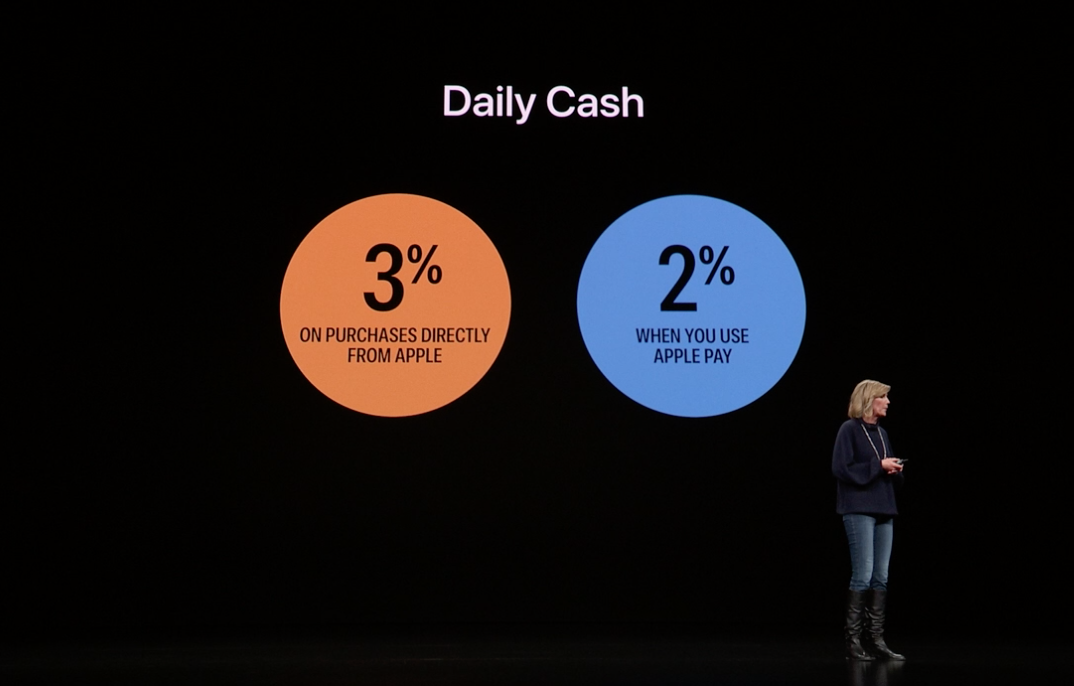
As previously rumored, Apple has partnered with Goldman Sachs and Mastercard to issue that card. Apple doesn’t know what you bought, where you bought it and how much you paid for it. And Goldman Sachs promises that it won’t sell your data for advertising or marketing.
When it comes to the fine prints, there’s no late fees, no annual fees, no international fees and no over-limit fees. If you can’t pay back your credit card balance, you can start a multi-month plan — Apple tries to clearly define the terms of the plan. You can contact customer support through text messages in the Messages app.
The Apple Card isn’t limited to a virtual card. You get a physical titanium card with a laser-etched name. There’s no card number, no CVV code, no expiration date and no signature on the card. You have to use the Wallet app to get that information. Physical transactions are eligible to 1 percent in daily cash.
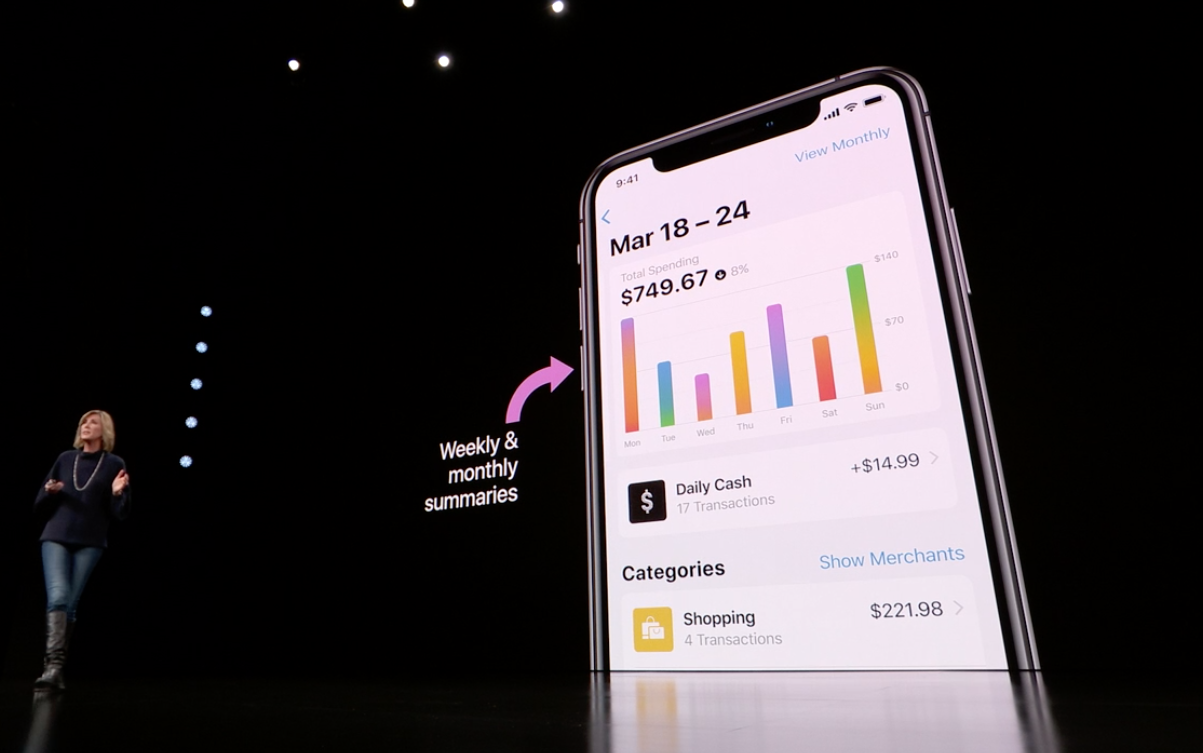
When it comes to security,
Come comment on this article: [Deal] Grab a saving on these Anker accessories
Come comment on this article: Here are some tips for customizing the hole punch on your Galaxy S10
Apple is holding a keynote today on its campus in Cupertino, and the company is expected to talk about new services. Don’t expect any new device, today’s event should be all about content. At 10 AM PT (1 PM in New York, 5 PM in London, 6 PM in Paris), you’ll be able to watch the event as the company is streaming it live.
Rumor has it that the company plans to unveil multiple new services. The most anticipated one will be a new video streaming service that should compete with Netflix, Amazon Prime Video and others. In addition to that service, Apple will unveil an Apple News subscription to access magazines and premium articles for a flat monthly fee.
But we might also hear about a mysterious credit card and a gaming subscription service. Details are still thin, so it’s going to be interesting to hear Apple talk about all those services.
If you have an Apple TV, you can download the Apple Events app in the App Store. It lets you stream today’s event and rewatch old ones. The app icon was updated a few days ago for the event.
And if you don’t have an Apple TV, the company also lets you live-stream the event from the Apple Events section on its website. This video feed now works in all major browsers — Safari, Microsoft Edge, Google Chrome and Mozilla Firefox.
So to recap, here’s how you can watch today’s Apple event:
Of course, you also can read TechCrunch’s live blog if you’re stuck at work and really need our entertaining commentary track to help you get through your day. We have a team in the room.
The Wall Street Journal has published a report on Apple’s media push. The company is about to unveil a new video streaming service and an Apple News subscription on Monday.
According to The WSJ, you’ll be able to subscribe to multiple content packages to increase the video library in a new app called Apple TV — it’s unclear if this app is going to replace the existing Apple TV app.
The service would work more or less like Amazon Prime Video Channels. Users will be able to subscribe to HBO, Showtime or Starz for a monthly fee. The WSJ says that these three partners would charge $9.99 per month each.
According to a previous report from CNBC, it differs from the existing Apple TV app as you won’t be redirected to another app. Everything will be available within a single app.
Controlling the experience from start to finish would be a great advantage for users. As many people now suffer from subscription fatigue, Apple would be able to centralize all your content subscriptions in a single app. You could tick and untick options depending on your needs.
But some companies probably don’t want to partner with Apple. It’s highly unlikely that you’ll find Netflix or Amazon Prime Video content in the Apple TV app. Those services also want to control the experience from start to finish. It’s also easier to gather data analytics when subscribers are using your own app.
Apple should open up the Apple TV app to other platforms. Just like you can play music on Apple Music on Android, a Sonos speaker or an Amazon Echo speaker, Apple is working on apps for smart TVs. The company has already launched iTunes Store apps on Samsung TVs, so it wouldn’t be a big surprise.
The company has also spent a ton of money on original content for its own service. Details are still thin on this front. Many of those shows might not be ready for Monday. Do you have to pay to access Apple’s content too? How much? We’ll find out on Monday.
When it comes to Apple News, The WSJ says that content from 200 magazines and newspapers will be available for $9.99 per month. The Wall Street Journal confirms a New York Times report that said that The Wall Street Journal was part of the subscription.
Apple is also monitoring the App Store to detect popular apps according to multiple metrics, The WSJ says. Sure, Apple runs the App Store. But Facebook faced a public outcry when people realized that Facebook was monitoring popular apps with a VPN app called Onavo.
Apple is about to announce some new services on Monday. While everybody expects a video streaming service as well as a news subscription, a new report from Bloomberg says that the company might also mention its gaming subscription.
Cheddar first reported back in January that Apple has been working on a gaming subscription. Users could pay a monthly subscription fee to access a library of games. We’re most likely talking about iOS games for the iPhone and iPad here.
Games are the most popular category on the App Store, so it makes sense to turn this category into a subscription business. And yet, most of them are free-to-play, ad-supported games. Apple doesn’t necessarily want to target those games in particular.
According to Bloomberg, the service will focus on paid games from third-party developers, such as Minecraft, NBA 2K games and the GTA franchise. Users would essentially pay to access this bundle of games. Apple would redistribute revenue to game developers based on how much time users spend within a game in particular.
It’s still unclear whether Apple will announce the service or launch it on Monday. The gaming industry is more fragmented than the movie and TV industry, so it makes sense to talk about the service publicly even if it’s not ready just yet.